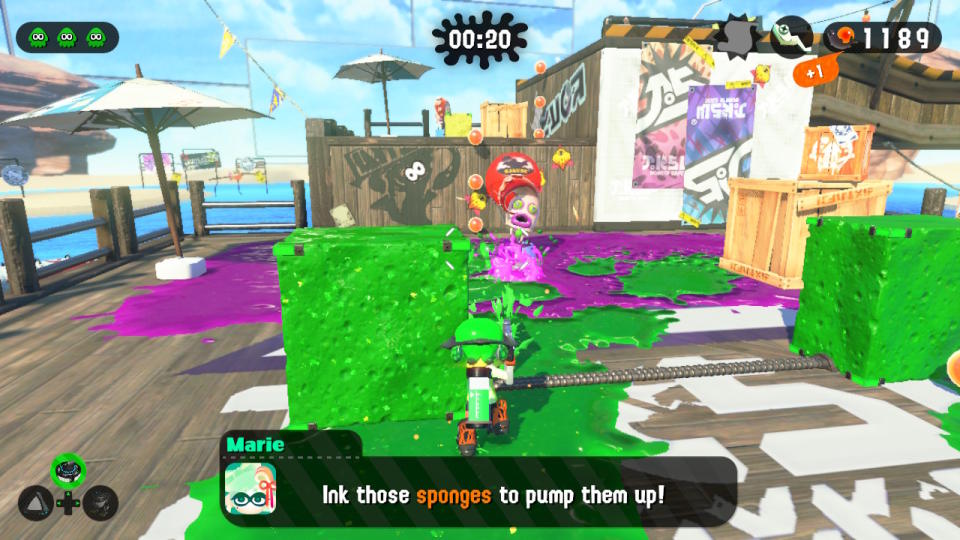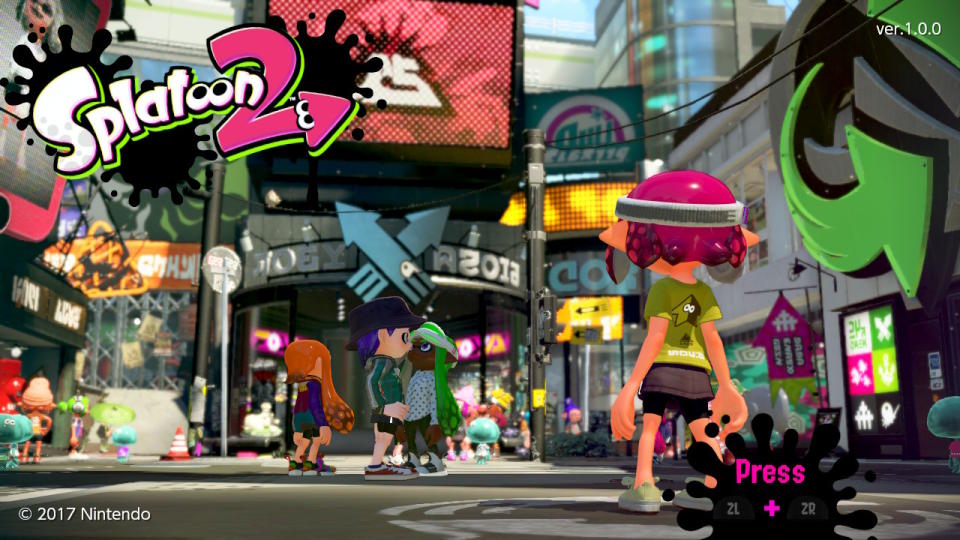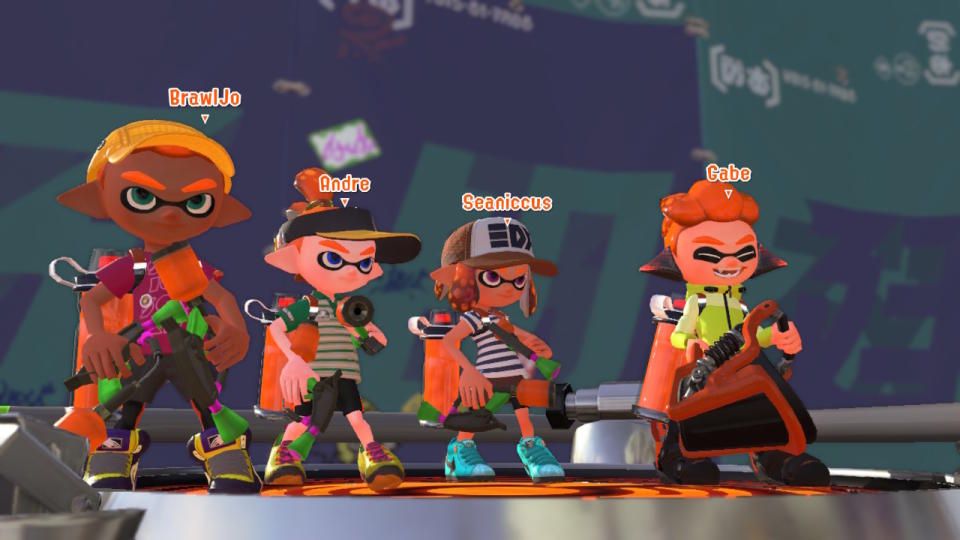'Splatoon 2' is a cautious but excellent evolution of the original
Everything that made the original 'Splatoon' great is back, but so are its failings.
The Wii U was far from the most popular console of its generation -- but fans who took a chance on Nintendo's first HD machine were rewarded with a tightly curated library of modern-day classics. Exclusives like Super Mario 3D World, Pikmin 3 and Donkey Kong Country: Tropical Freeze showed that the value of the Wii U wasn't in its hardware but in Nintendo's creative library of games. Among them was Splatoon, the company's first online competitive shooter. The game's quirky squirt gun multiplayer battles were a genuine, delightful surprise -- and its Nintendo Switch sequel takes everything that was great about the original and makes it just a little bit better.
That's mostly a good thing. The original Splatoon was something of an experiment, a Nintendo game that focused on online play as the primary selling point. The game succeeded by being something unique: a frantic, multiplayer shooter that dripped with personality and cultivated a ravenous community of loyal fans. Splatoon 2 basically picks up where the original left off, starting with the same core game mechanic that incentivized teamwork over individual victory: Turf War.
To understand Turf War -- and Splatoon 2's primary multiplayer modes -- you need to know a few things. First, there are no bullets in Splatoon. Instead, players use a mix of squirt guns, paintbrushes and buckets to spray, fling and slosh colored ink across the battlefield. Battles aren't won by how many enemies the player defeats but by how much of her team's color covers the ground at the end of a match.
Sure, you can take out other players in these matches, and you'll need to to win, but it's not the end goal. By rewarding players based on how much ground they cover, the game passively changes the focus from being the best fighter to contributing the most to the team victory. It also takes the pressure off casual players. No good in a firefight? You can still contribute by focusing on keeping the ground your team's color.
The paint mechanic is more than just a gimmick to promote teamwork -- it also changes how you can move. If the ink on the ground belongs to the player's team, she can turn into a squid and swim through it to replenish ammo and move faster. If it's the enemy team's color, she'll be slowed down and take damage. There are a few more rules, of course, but the long and short of it is that Splatoon 2 offers a multiplayer experience unlike anything in other games. Its unique twist on movement, weapons and ink-based victory helps keep game modes like tower defense, control point and capture-the-flag feeling fresh.

So what's new about Splatoon 2? Well, a few things. For one, the entire experience just looks better: Colors are more vibrant and bright; player characters, weapons and clothing are far more detailed; and best of all, the entire game runs at a noticeably higher frame rate. There are also new levels, weapon upgrades and special moves that change the way the game is played. The new Splat Dualie pistols, for instance, open up player movement by adding a dodge roll to the game, which drastically changes how close-range combat unfolds. Other weapons have been tweaked to give them more balance, adding a long-range attack for roller weapons, for instance, or allowing long-range weapons to hold a charge while players swim through ink.
Nintendo's decision to stick close to the original mostly works: Splatoon 2 strengthens the series' core gameplay, gives players more tools to use in battle and retains the spirit of fun that made the first entry a hit. Unfortunately, it also retains a handful of the first game's awkward flaws.

Multiplayer modes and maps are still limited to a two-at-a-time rotation that changes every few hours, for instance. Players still can't change weapon and gear loadouts without quitting multiplayer and jumping back in either. (Being able to switch weapons between matches would have been a huge quality-of-life improvement.) These aren't deal breakers, but it would have been nice to see some more of the game's rough edges ironed out in the sequel.
The sameness of Splatoon 2 falls flat in the single player campaign, however. The game's Hero Mode very much follows the vein of the original, serving as training for the main event: multiplayer. It's basically a set of linear levels that introduces the game's core concepts. Here's a level that teaches you how to swim through ink to make longer jumps. Here's one designed to teach you how charge weapons work.

As a basic gameplay tutorial, Splatoon 2's single-player mode is a good introduction for folks new to the series, but players who have sharpened their teeth on multiplayer (or just played the first game) might find it a bit tedious -- and that's a shame, because it's framed around a light and fun story that revisits characters from the first game.
The entire time I played Hero Mode, I felt like it could have been something great. It almost was too: Every now and then, the campaign will throw an incredible boss fight at you or a complex, joyously fun level that calls back to the best of games like Super Mario Galaxy. Instead, the single-player campaign is merely an OK experience with a few great moments.

Despite this, Splatoon 2 is still a fantastic experience for Nintendo Switch owners looking for a fun, addictive multiplayer game. It didn't learn every lesson it could have from its predecessor, but it delivers on the core gameplay mechanics that made the original an unexpected hit. Better still, it retains the original game's cultural identity by building a community around Splatoon's in-game hosts and by showcasing artwork made by players in a Miiverse-like drawing app.
Splatoon 2 is everything it needs to be and nothing more. If you're OK with that, you'll love it. Just don't buy it for the single-player campaign alone.





















